Signs of life for Samsung’s standard smartwatch
In aligning the designs of its entire smartwatch range, Samsung’s mid-range Galaxy Watch 8 has been given a stunning makeover. The brand has done an excellent job of retaining the line’s minimalist look while injecting a much-needed dose of personality. The software is better, too, with Google’s Gemini AI adding the kind of assistant support long overdue on smartwatches. Yet, this remains an incomplete experience in comparison to the industry’s best offerings; new health and fitness features are still in beta (and feel it) or limited even within the Android ecosystem, while battery life on the smaller edition we tested simply hasn’t got the upgrade it needed. This is a much more memorable Samsung smartwatch than previous editions, but, while still a strong option for some to consider, it isn’t quite polished enough to become the no-brainer pick for Android users.
-
The cushion case design is nicely implemented
-
Google Gemini is a huge upgrade
-
Wear OS 6 and One UI 8 work well together
-
New health and fitness features are a mixed bag
-
Barely a battery improvement on the Watch 7
-
Key health features remain exclusive to Samsung phone users
When Samsung decided to give Google’s Wear OS platform another try back in 2021, I’d say there were high hopes among Android users that the result would eventually be a smartwatch that truly mirrored what iOS users had with the Apple Watch.
Yet, while there hasn’t been anything necessarily wrong with the efforts since the two Android giants teamed up again, they also haven’t excited us as much as we hoped. We’ve seen Samsung introduce major health features before Apple, debut bold new Galaxy Watch designs, and also get first access to Google’s latest software updates—even before the watches made by Google itself.
But you always have to consider the whole package, and Samsung’s smartwatches have still struggled for performance in a few key areas over the last few generations. In contrast, Apple has remained remarkably consistent, maintaining its high bar across the board.
But things might be changing, starting with the Galaxy Watch 8. After extensive testing, we think this is Samsung’s most memorable, enjoyable mid-range smartwatch in years. And with all-new AI features being bandied about in all areas of the new watch series, there’s plenty of encouragement for those hunting for a new Android smartwatch. Some characteristic flaws remain, but Samsung has taken a forward step towards offering a more consistent, complete smartwatch experience.
Design and display
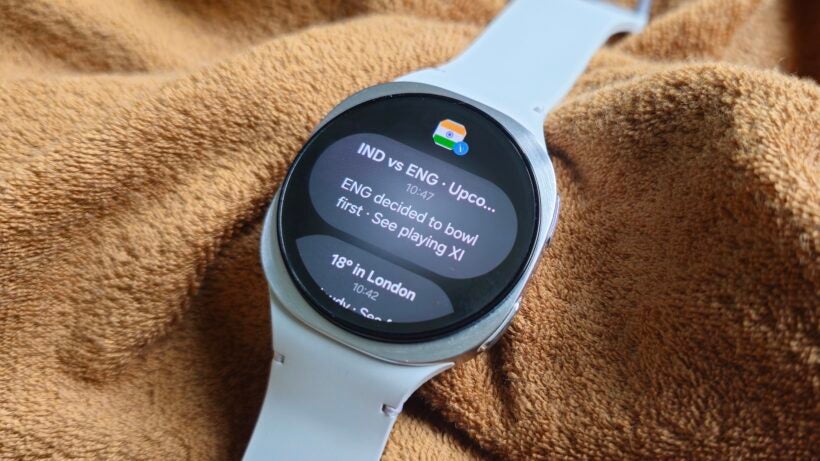 (Image credit: Wareable)
(Image credit: Wareable)
Advertisement
The Samsung Galaxy Watch 8 has a look that’s both familiar and refreshed. Unlike the Galaxy Watch Ultra and the reinstated Galaxy Watch 8 Classic, this year’s standard version sports a cleaner, less cluttered design. With it, Samsung has also introduced more consistency across its smartwatch lineup, universally installing the same kind of ‘cushion’ case design that debuted on last year’s Ultra model.
It supposedly makes the Watch sit more comfortably on your wrist, and, while we’re unsure if comfort changes from wearing the Galaxy Watch 7, we believe it offers a nice upgrade in appearance. Some will inevitably dislike that Samsung has changed it, but we think it’s just about right. This remains the Samsung smartwatch with the most minimalist design, and changing the case design doesn’t undermine that clean, clutter-free look.
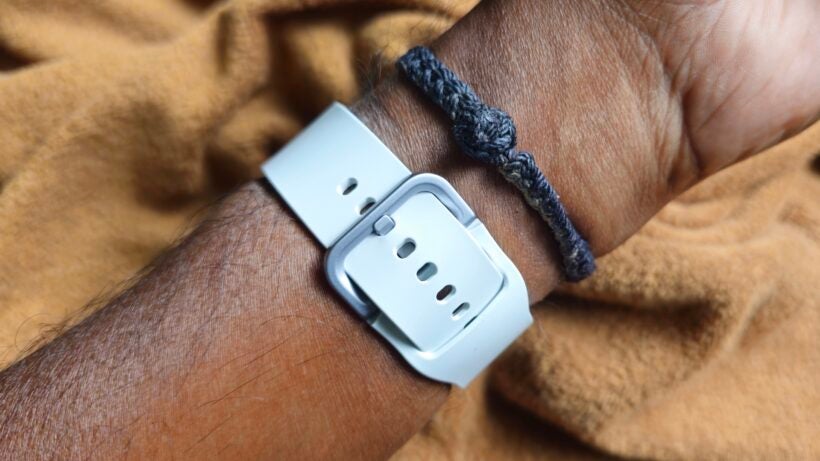 (Image credit: Wareable)
(Image credit: Wareable)
Apart from the new cushion case design, there isn’t much else to report on the design front, aside from Samsung changing the lug connectors that attach the watch strap to the case. There are also official straps that can be easily clipped on, and replacing them is straightforward.
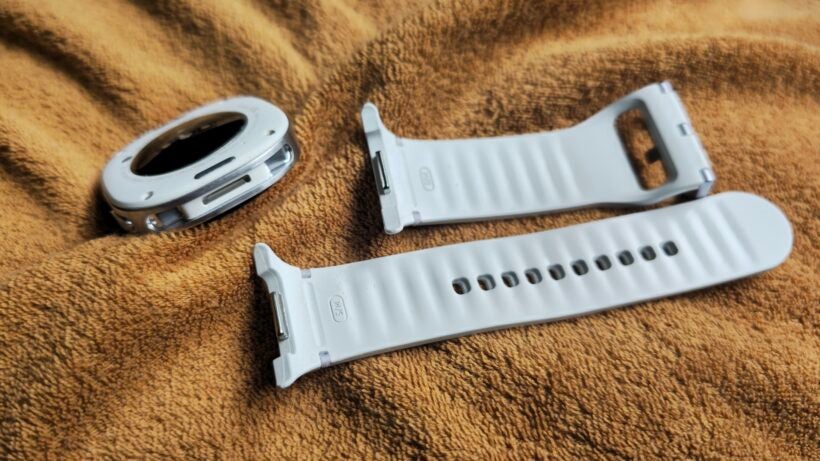 (Image credit: Wareable)
(Image credit: Wareable)
Samsung’s watch displays are usually excellent, and the same is true again for the Galaxy Watch 8. With increased resolution and brightness—up to 3,000 nits—the 1.3-inch Super AMOLED screen on the 40mm edition we tested is notably vivid and enjoyable to view and use.
Advertisement
There’s been no change in waterproofing; this is a 5 ATM rated smartwatch, which means you can wear it in the shower and swimming. As long as you’re not diving deeper than 50 metres with it, you’re good to go—and recreational diving is also off limits.
Smartwatch features
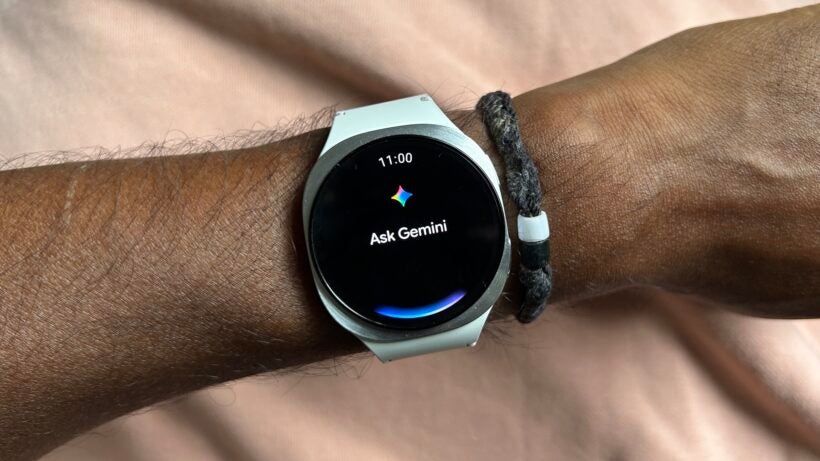 (Image credit: Wareable)
(Image credit: Wareable)
In recent generations of the Watch 8, it has been difficult to identify a truly standout smartwatch-related feature. Samsung’s focus has primarily been on maintaining the existing standards, providing users with a fairly comprehensive experience (such as including the option of LTE) while also integrating Google more deeply through software and apps.
This time, there’s more to discuss on this front. The first noticeable change is that the user interface is much more organized. Health features are now on a single screen, eliminating the need to scroll through multiple screens to find what you need. Additionally, you can add relevant Tiles (widgets) to the feature stream.
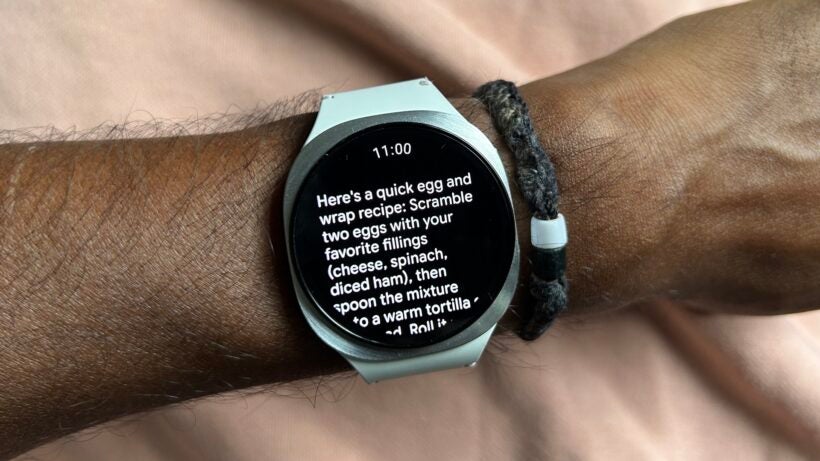 (Image credit: Wareable)
(Image credit: Wareable)
Sometimes, the simplest things make a big difference day-to-day, and this is one of those things. The same goes for the new ‘Now’ bar, which now allows you to open running apps directly from the main watch face. An easy addition that creates smoother daily interactions.
Advertisement
A much smarter smartwatch
Then there’s the introduction of Google Gemini, the smartwatch assistant that Wear OS and Samsung smartwatches have been crying out for. Unlike Samsung’s Bixby or Google Assistant, which haven’t fully met expectations over the last few years, Gemini feels different. If you ask it a question, it actually provides a helpful response.
When asked for a recipe idea with the few ingredients in our fridge, it provided the response shown above. Next, when I wanted general ideas for how to spend my day, the suggestions were, again, detailed and interesting. If we were to ask Assistant or Bixby similar questions, as we’ve tried countless times in testing over the years, we’re sure the outcome would have been far less helpful.
It’s exactly the kind of utility we envisioned from smartwatches years ago—a genuinely useful companion, and something both different from what a smartphone or sports watch can provide. With this inclusion, it feels like we’re finally making progress toward that goal.
Health tracking
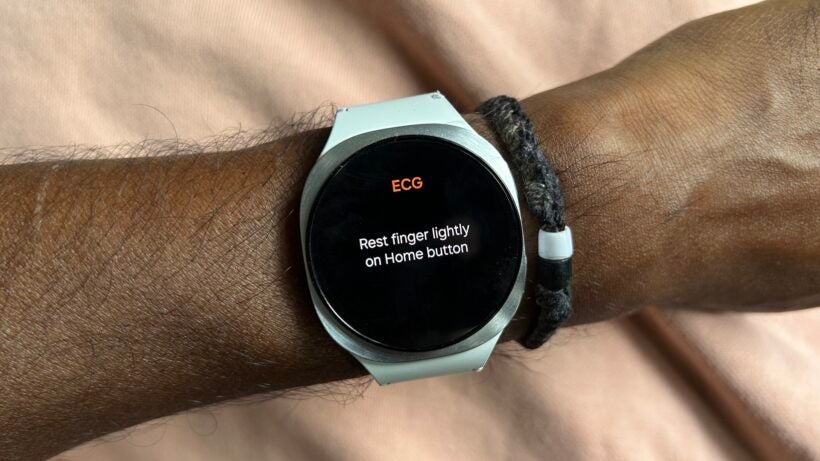 (Image credit: Wareable)
(Image credit: Wareable)
Samsung’s ecosystem is notably strong in health tracking, offering features like ECG measurements, blood pressure monitoring, and sleep apnea detection. While some other smartwatches include these features, Samsung’s implementation of its health capabilities generally gives it an edge over many competitors.
The ECG readings are dependable, and the blood pressure monitoring can mimic the instant results of a cuff-based device. However, you still need to be willing to calibrate it initially with a traditional monitor and repeat this process every few weeks to maintain accuracy.
Advertisement
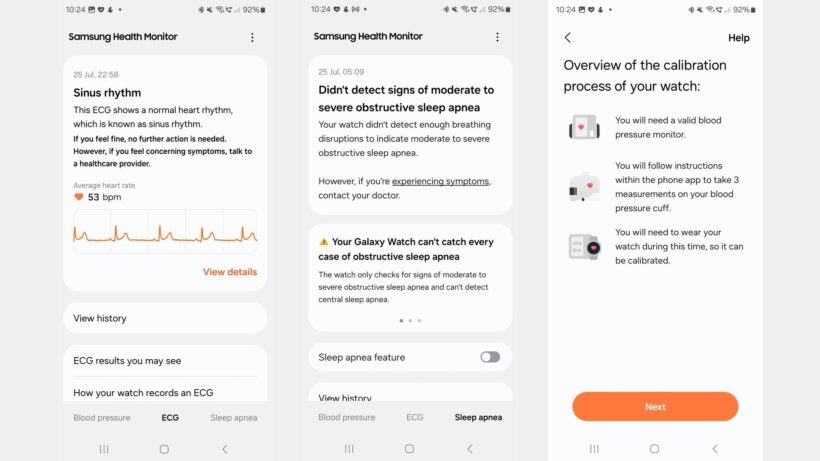 (Image credit: Wareable)
(Image credit: Wareable)
These features (including the new sleep apnea detection mode) also remain within the Samsung Health Monitor app, which is separate from the Samsung Health app.
It’s still exclusive to Samsung smartphone users, and, while we’re skeptical it’ll ever happen, we live in hope the company will consider making it available more widely at some point in the future. Until that happens, it’s unfortunately a big reason to avoid Samsung smartwatches if you have an Android from another brand.
Encouraging signs for ‘Vascular load’
When you swipe to the Samsung Health features on the Galaxy Watch 8, you’ll find many other health data points and tools. There are Energy Scores to estimate your energy reserves for the day (out of 100), based on factors like sleep. You can also view your current heart rate, perform a body composition analysis, do breathing exercises when you’re feeling stressed, and enjoy the new vascular load insight.
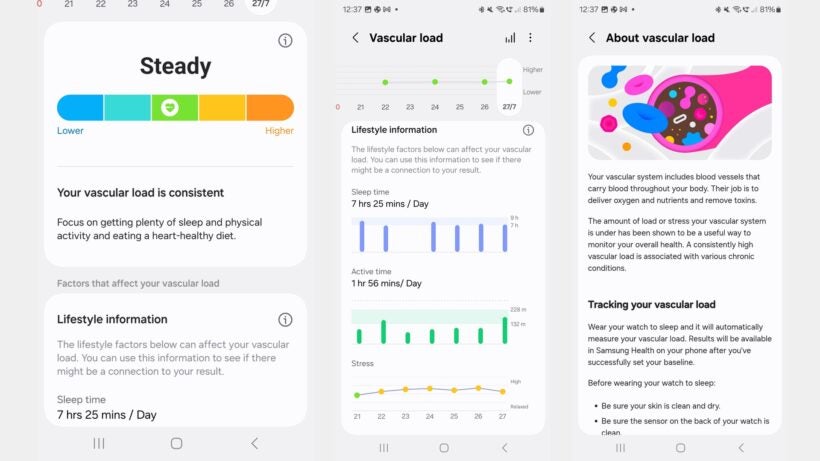 (Image credit: Wareable)
(Image credit: Wareable)
Vascular load is all to do with assessing the stress on the vascular system during sleep. First, a baseline must be established from two nights of sleep, with the watch using the optical heart rate sensor on the case’s rear to generate this metric.
Advertisement
Once finished, the Health app shows your baseline and uses a color-coded bar to illustrate how much you stay within or deviate from it. It also displays how sleep, stress, and active time influence your vascular load reading.
The watch presentation clearly shows stress levels, making it the most effective and well-designed new health feature.
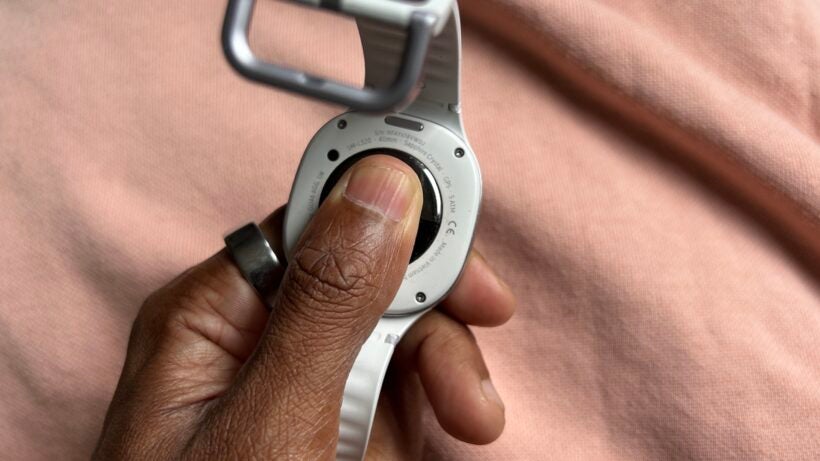 (Image credit: Wareable)
(Image credit: Wareable)
Work still to be done on the new ‘Antioxidant index’
Another new feature is the ‘Antioxidant index,’ which aims to assess if you’re consuming enough fruits and vegetables to boost antioxidant levels. This can help decrease the risk of chronic diseases and may even enhance memory.
Samsung assesses this by using the optical sensor to measure carotenoids, antioxidants present in supplements and fruits. However, it’s not necessarily a passive measurement‚ with this tracked by placing your thumb onto the device’s optical sensor. While you’ll need to remove the watch to do it, the measurement is at least completed in seconds.
My readings always stayed within the low or very low range. I don’t believe my diet lacks fruits and vegetables, so these consistently low readings seemed off.
Advertisement
If low, the app recommends eating more fruits and vegetables or even suggests specific types of fruit. I like this feature’s concept, but, based on testing, it’s rightly labeled as a ‘Labs’ feature—Samsung will have to refine this one to make it genuinely useful.
Sleep tracking
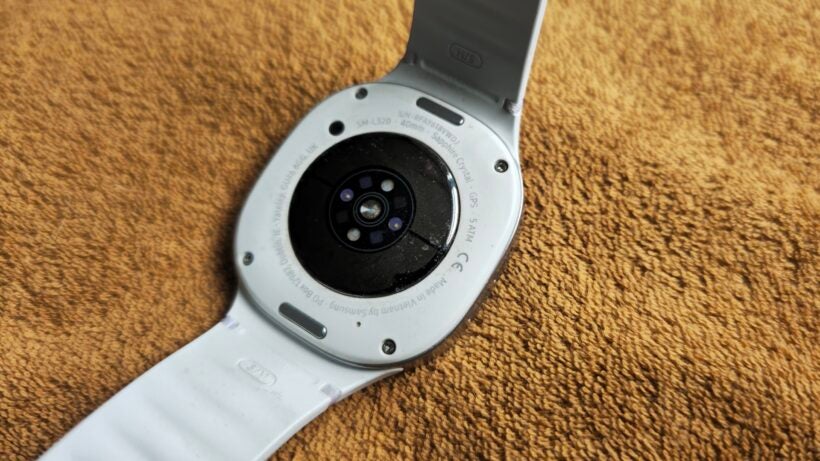 (Image credit: Wareable)
(Image credit: Wareable)
Tracking sleep with Samsung’s smartwatches typically provides a solid experience both on and off the device. The Watch 8 can monitor sleep duration, produce sleep scores, analyze sleep stages, and also track blood oxygen, skin temperature, and heart rate.
I’ve been wearing it alongside an Oura Ring 4, Ultrahuman Ring Air, and another fitness watch I can’t actually talk about just yet. The data on sleep duration, including my sleep onset and wake time, as well as metrics like heart rate and temperature, were similar across devices.
The discrepancies mainly appeared during very short periods in REM sleep and drops in blood oxygen readings caused by fit.
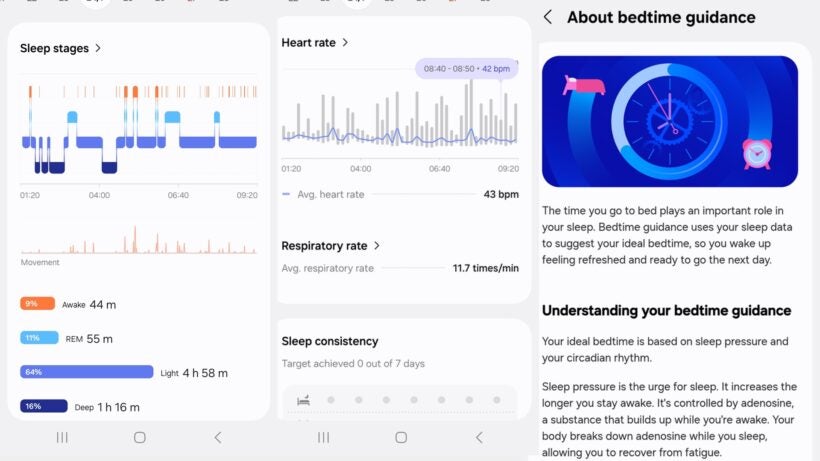 (Image credit: Wareable)
(Image credit: Wareable)
Advertisement
In addition to core sleep tracking, there’s a notable feature of bedtime guidance. Based on recent sleep history, it will notify you of a suggested bedtime. If you need to catch up on sleep from previous nights, the watch will recommend that you go to bed earlier to aid rest and recovery. This is Samsung catching up to the dynamic bedtime features we’ve seen released by the likes of Whoop in recent years.
The sleep apnea mode, found in the Health Monitor app, reminds users that Samsung spreads features across multiple apps. You need to enable the sleep apnea tracking, which monitors changes in blood oxygen levels and could indicate moderate to severe obstructive sleep apnea.
It takes two nights of sleep, after which the watch will turn off the feature. The Health Monitor app will simply say whether it’s detected signs or not, and also remind you of what it isn’t able to detect during that time.
Fitness and sports tracking
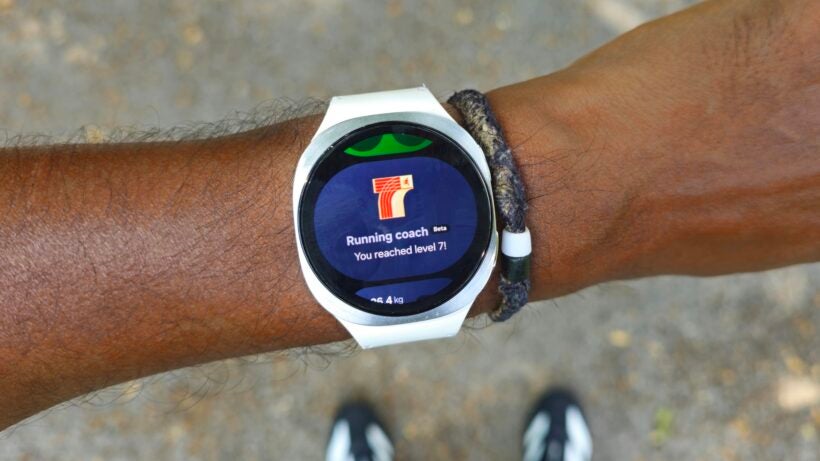 (Image credit: Wareable)
(Image credit: Wareable)
Whether you want to use the Watch 8 as a fitness tracker or a sports watch, it performs adequately enough for a smartwatch. However, when it comes to providing the best fitness or sports tracking features, there’s still room for improvement.
In its sports tracking app, you have plentiful modes to pick from, and that covers everything from jumping on an elliptical trainer to going from an open water swim. If you’re heading outdoors, there’s dual-frequency GPS, which means the Galaxy Watch 8 offers the industry’s gold standard (or, at least, its interpretation of that standard) in dealing with problematic areas for accurate location tracking, such as skyscraper villages, dense woodland, or mountain ranges.
Advertisement
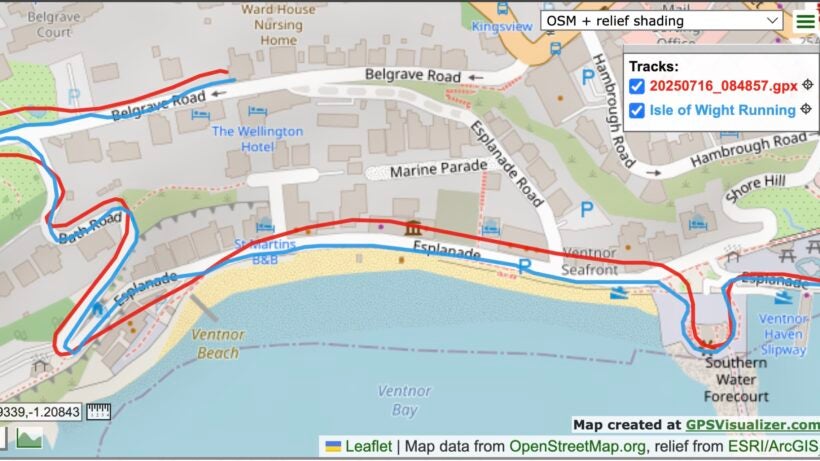 (Image credit: Wareable)
(Image credit: Wareable)
Locking onto a signal is usually pretty quick. However, after testing it against a few different dual-band sports watches, including the Garmin Forerunner 970 and the Polar Grit X2, the GPS performance falls short of the best.
During most outdoor runs, the distance tracking is overestimated, with the average pace faster, too, as a result. However, overall, heart rate tracking was very accurate even when increasing the intensity during mini intervals.
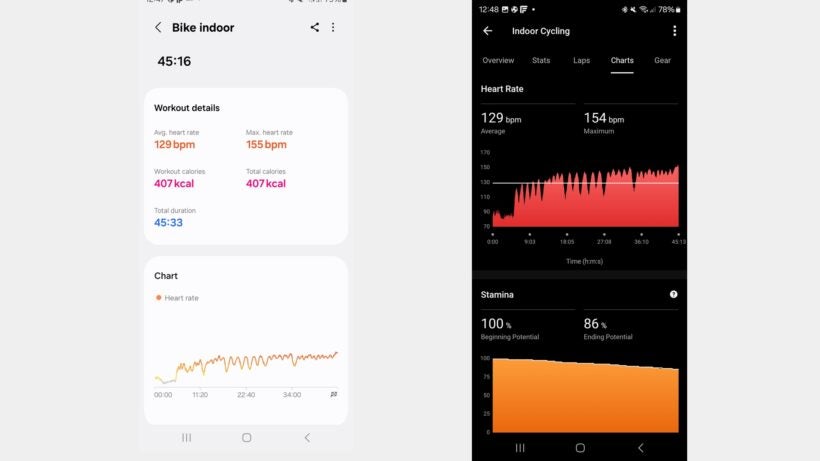 (Image credit: Wareable)
(Image credit: Wareable)
Your very own running coach
Though still in beta, the most significant new sports tracking feature is aimed at runners: a personalized running coach and plan builder. After you finish a short questionnaire about your running experience and complete a 12-minute outdoor fitness test, you’ll receive a selection of running plans based on how you performed in that test.
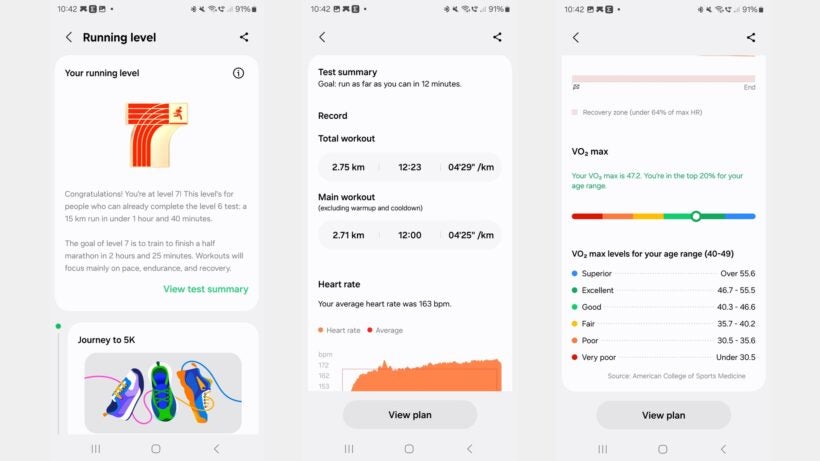 (Image credit: Wareable)
(Image credit: Wareable)
Advertisement
In my test, I scored a level 7, which suggests I can already complete a 15 km run in under 1 hour and 40 minutes. To my surprise, the Galaxy Watch 8 tells me that my goal is to finish a half-marathon in 2 hours and 25 minutes.
Considering that my slowest half-marathon was my first, completed many years ago in about 1:45, this goal felt a bit too easy. Samsung claims this feature is for runners of all levels, but my experience with the plans here suggests it’s mostly targeted at beginner runners.
Battery life
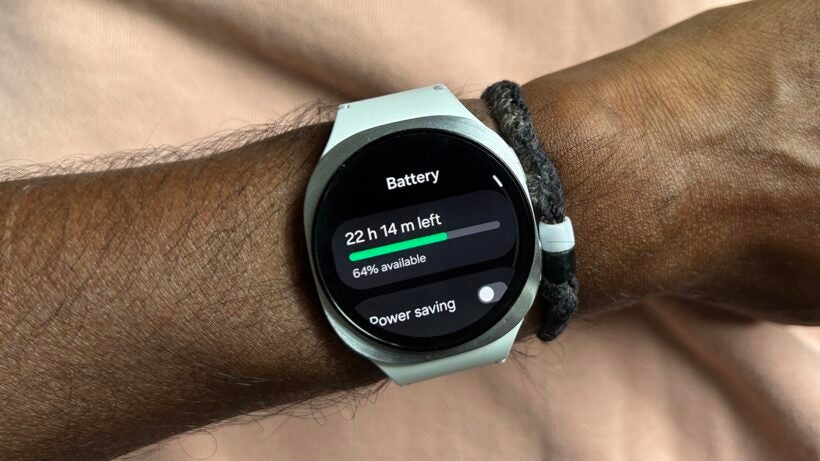 (Image credit: Wareable)
(Image credit: Wareable)
Samsung promised battery improvements, but in reality, it’s not the kind of boost you notice—at least not on the smaller 40mm Galaxy Watch 8.
Whether using it with raise to wake or keeping the screen on 24/7, the average watch time ranged from about one day to a day and a half. Compared to an Apple Watch Series 10, that doesn’t seem too bad. But within the context of Wear OS smartwatches, it still doesn’t feel sufficient.
We’d accept removing features if it meant matching the battery life of the Watch 8 and other Samsung smartwatches.
Advertisement
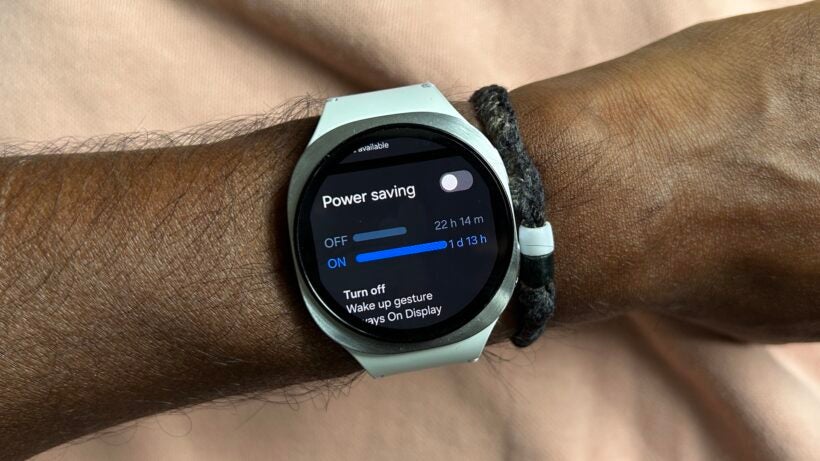 (Image credit: Wareable)
(Image credit: Wareable)
Check the battery settings on the watch, and you’ll see options to extend battery life by limiting health features.
Features like sleep apnea tracking seem to cause the most significant drain on the battery, though we found that even using the watch for an hour of outdoor running caused GPS to drop by 15-20%. That’s pretty significant, even if we expect things to be slightly better with the larger battery available on the bigger model.
It can be frustrating when you think you’ve got enough battery to get through a day or workout, only to stare at a blank screen mid-workout or before the day is over. However, that’s still generally the nature of smaller smartwatches in 2025—and the Galaxy Watch 8 doesn’t break the mold on that front.
